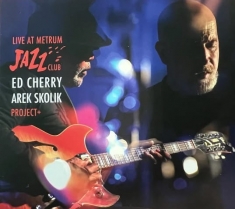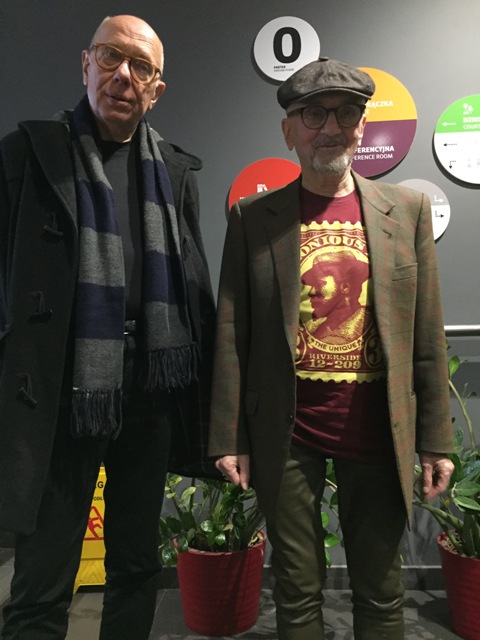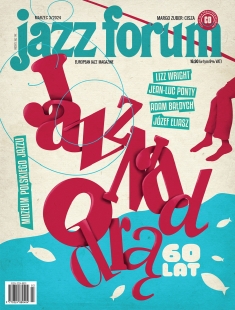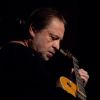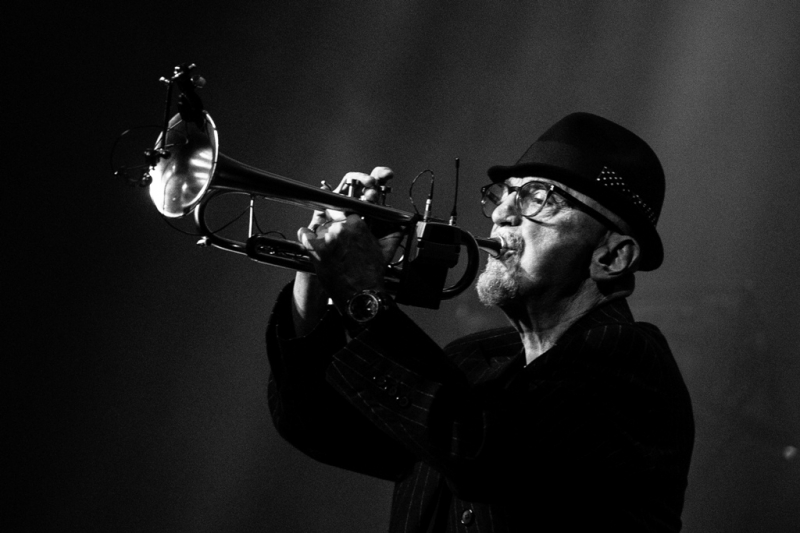
fot. Filip Błażejowski
Lot ku gwiazdom!
Leć dalej, wysoko, ku gwiazdom! Tomasza Stańkę żegna Jego przyjaciel Tomasz Tłuczkiewicz.
Od pięćdziesięciu pięciu lat trwam w podziwie dla Jego sztuki i osoby. Jestem Jego fanem, przekonanym, że mój świat jest trochę lepszy, bo dzieliłem go z Nim. Jest nas wielu, bo chyba każdy, kto tak jak ja w tamten wieczór św. Mikołaja 1963 roku w Auli Politechniki Wrocławskiej, w błysku nagłego olśnienia usłyszał w dźwięku jego trąbki ten krzyk, szloch i westchnienie, tak swoiste i wyłącznie własne jak odcisk kciuka, czy to z Komedą, jak ja wtedy, czy z Jazz Darings, czy później z Kwintetem, Kwartetem z Szakalem i Vesalą, z Freelectronic, czy całkiem niedawno z Kwartetami, warszawskim i nowojorskim.
Chyba każdy, kto tego doznał, poczuł się troszeczkę inny niż przedtem i już nie tracił z pola widzenia jego lotu. Zrazu ku gwiazdom, potem wśród gwiazd, a teraz ponad nimi w stratosferze, gdzie od bliskości absolutu ze zwykłych śmiertelników sypie się pierze, a prosperują tylko osoby heroiczne. Cnotą heroiczną Tomasza była suwerenność. Trajektorię jego lotu wyznaczał instynkt, równie jedyny i wyjątkowy, jak jego dźwięk i zwroty melodii w kompozycjach. Jak trzecie oko prowadziło go drogą własną i nieomylną, jedyną jak lina nad przepaścią, nawet wtedy, gdy horyzont zdawał się niknąć w mgle zatracenia. To ten automatyczny pilot, chciałoby się powiedzieć Anioł Stróż, gdyby nie chodziło o tak zdecydowanego agnostyka-ewolucjonistę, chronił go przed ryzykiem, którego unikał, a jednak stale się na nie narażał powodowany paradoksalną logiką wolności i nowatorstwa.
Lubił robić wszystko po swojemu, jak nikt inny, inaczej niż ktokolwiek przed nim, a więc – prędzej czy później – inaczej niż kiedyś przedtem on sam. Suwerenność to wolność od stereotypów, także od własnej legendy, ba – od wolności także, która w sztuce jako stan bywa jałowa, a twórcza jest tylko jako dążenie do wolności.
Żył siedemdziesiąt sześć lat. To więcej niż przeżyli Seifert, Muniak, Stefański. Także Armstrong, Bird, Miles, Coltrane i Monk. Ale mniej niż Roy Haynes, Lee Konitz, Sonny Rollins, Wayne Shorter…
Leć dalej, wysoko, ku gwiazdom,Tomaszu!
Tomasz Tłuczkiewicz
Tomasz Tłuczkiewicz i Tomasz Stańko
fot. Paweł Brodowski
Tomasz Stańko zmarł na raka płuc 29 lipca 2018 roku w szpitalu onkologicznym w Warszawie.
ECM Tribute:
Tomasz Stańko, a Polish jazz trumpeter whose plangent (if sometimes chapped) sound and knobbly lyricism made him a leading light in both the Polish and larger European avant garde, died Sunday at a hospital in Warsaw, Poland, of lung cancer complicated by pneumonia. He was less than three weeks past his 76th birthday.
His death was confirmed by multiple outlets, including Reuters and the Associated Press, as well as by his longtime record label, ECM Records.
Although associated with free and avant-garde jazz for most of his nearly 60-year career, Stańko did not make the shrieking, ferocious music that those terms often bring to mind. Rather, he developed a moody, meditative, and lyrical version of free improvisation, one that used space generously and employed a deceptively thin trumpet tone for expressive purposes. At the same time, his music had a relentless, often funky sense of rhythm.
Stańko worked heavily in the United States and with American musicians, including Chico Freeman and Jack DeJohnette. In his final years he led a quartet entirely comprising young, forward-thinking musicians based in New York. Nevertheless, his career was primarily centered in Europe, and Poland in particular. Pianist Marcin Wasilewski, a protégé and longtime associate of Stańko’s, told JazzTimes in 2002, “He is our country’s greatest jazz musician.”
Tomasz Stańko was born July 11, 1942 in the city of Rzeszów in Nazi-occupied Poland, and grew up under the country’s Soviet communist hegemony. However, despite that chain of oppressive regimes, the youthful Stańko was able to discover jazz through the Voice of America broadcasts of jazz advocate Willis Conover. In 1958, while a student at the Chopin Conservatory of Music in Krakow, Stańko saw his first jazz concert, a Dave Brubeck Quartet performance sponsored by the U.S. State Department. “The message was freedom,” he told the New York Times. “Jazz was [a] synonym of Western culture, of freedom, of this different style of life.”
Shortly thereafter, he made his debut in Krakow. Stańko co-led, with pianist Adam Makowicz, a band called the Jazz Darings that took as its inspiration the new “free” sounds of the Ornette Coleman Quartet. Stańko would display the influence of that quartet’s trumpeter, Don Cherry, throughout his career. (Stańko worked with Cherry at a German jazz festival in 1971, the results of which can be heard on Cherry’s LP Actions.)
In about 1961, he moved to Warsaw and joined a quintet led by another pianist, Krzysztof Komeda, with whom he worked through most of the ’60s. Stanko was thus a part of Komeda’s 1965 recording Astigmatic, often cited as the most important album in the history of European free jazz. The trumpeter showed the influence of Cherry in his spontaneity, lyricism and fast-and-loose relationship with tonality; however, he also evoked Miles Davis, Stańko’s first hero, in his languorous tone and use of space and atmosphere.
While Stańko had begun recording under his own name in 1970 for several small European labels (frequently, the Warsaw-based Muza Records), the relationship he began in 1975 with Germany’s ECM Records would prove his most prolific and fruitful. It provided avenues for collaboration with other European jazz greats, such as British saxophonist John Surman and bassist Dave Holland, Swedish pianist Bobo Stenson, and Norwegian saxophonist Jan Garbarek, as well as with Americans like DeJohnette and bassist Gary Peacock.
Although he worked steadily throughout the 1980s and 1990s, Stańko’s greatest success came in the last 20 years, beginning with the surprise success of his 1997 ECM album Litania (a tribute to Komeda, who had passed away in 1969). His success continued in the new century when he formed an enduring partnership with the Warsaw trio of pianist Marcin Wasilewski, bassist Slawomir Kurkiewicz, and drummer Michal Miskiewicz. He also maintained a second residence in New York, where he worked regularly in clubs with musicians based in the city. In 2012 he formed his New York Quartet, featuring pianist David Virelles, drummer Gerald Cleaver and bassist Thomas Morgan (replaced by Reuben Rogers in 2016). Last April, he was diagnosed with terminal lung cancer, developing pneumonia in June.
Stańko’s death was met by widespread mourning and tributes from his peers. “He was a unique musician with deep feelings and a gentle soul,” Holland tweeted.
“Very saddened about this,” bassist Michael Formanek added. “He was a beautiful man and a beautiful musician.”
Stańko is survived by his sister, Jaga Stańko Ekelund, and his daughter, Anna Stańko.
Ed Cherry/Arek Skolik Project+
Live At Metrum Jazz Club
